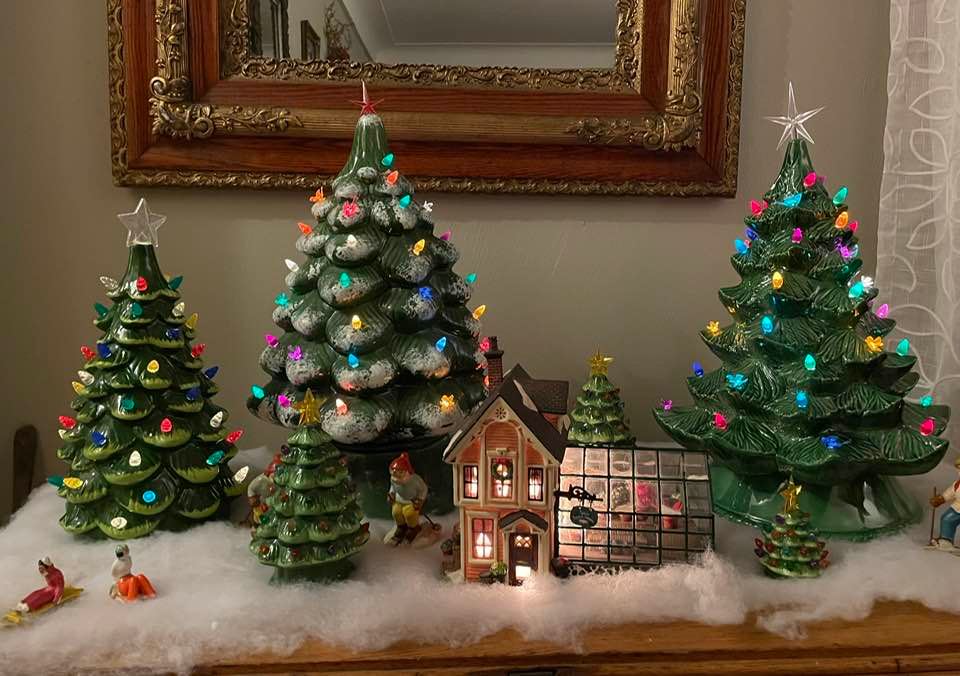DECEMBER 17, 2021 – As I lie low with The Blasted Cough, and no holiday visitors are expected at our hearth this year, we’re not buying a cut-from-the earth Christmas tree. What’s ironic is that by my latest count, we have 17 “pretend” Christmas trees on display—not including the flat, felt tree (which our granddaughter decorated with felt ornaments attached with Velcro) hanging on the back of the front door. These “stand-in” volunteers—all imported from Asia—exude ample Christmas cheer. They’re the work of a miracle worker—my wife, who, in a pinch, decorates with flash, dash, and flare.
I’m reminded of family visits with our grandparents down in Minneapolis at this time of year (except on Christmas Eve or Day, when the old folks always visited us). They never fired up for a Christmas tree, and I was disappointed by their lack of enthusiasm for “this festive season of the year,” as Charles Dickens called it.
Years later, my own parents slacked off, despite having been perennially good about embracing Christmas decorations. In their later years, Mother and Dad went for a down-sized, artificial tree, afforded added height by way of a coffee table.
Now I’ve become my parents . . . and grandparents.
We’re all familiar with the pagan tradition of hauling evergreen boughs and branches into the home around the time of the winter solstice. Ancient Egyptians, early Romans, Druids and Vikings—all decidedly non-Christian—brought spruce, fir, and pine into their lodgings at this time of year. Who knows how the summer solstice was celebrated in the Southern Hemisphere in ancient times?
With a bit of research, I confirmed that Der Tannenbaum in its modern conception has German origins. Martin Luther, in fact, brought a tree into his home, and while pacing the room, working on a sermon, he got the bright idea of wiring candle holders to the branches, jamming candles into them and . . . lighting up!
“Lutheranism” reminds me of the story told by our (nominally Lutheran) Swedish grandmother—the one whose enthusiasm for a real Christmas tree faded in her old age. On Julafton—Christmas Eve—while my grandmother and her siblings were shunted from the living room of their farmhouse in Småland, their father would pull a Martin Luther. When the tree was fully lit—ready to burn the house down—he’d then allow the kids back into the room to behold Julgranen, “aglow as if with celestial light.”
Given how evergreen boughs burn, it’s a miracle that whole villages didn’t go up in flames during this “festive season of the year.”
The threat of brimstone, not fire, was the reason for the Christmas tree’s late acceptance in America. Pilgrim Governor William Bradford condemned “Christmas evergreens” as “pagan mockery,” and Massachusetts later imposed fines for hanging Christmas decorations—or bringing pagan trees into the picture. Only with the influx of German immigrants in the early 19th century did Der Tannenbaum begin to gain approval.
What in the world would Christmas be without it . . . without O Tannenbaum!?
(Remember to subscribe to this blog and receive notifications of new posts by email.)
© 2021 by Eric Nilsson

1 Comment
Ma Jones, my first after school sitter, had a ceramic tree like those. I thought it was glorious.
Comments are closed.